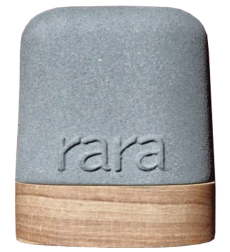A Journey Through the History of Rings
In the vast lexicon of personal adornment, few pieces hold as much symbolic weight or intimate allure as the ring. This modest circlet, worn on the finger, transcends mere fashion—it is a storyteller, a keeper of promises, a silent communicator of status, love, and identity. Join us as we traverse the millennia, unraveling the rich tapestry of the ring's history, from ancient rituals to its reimagined place in modern style.
Ancient Origins: Love Woven in Reeds
Imagine the sun setting over the Nile, casting a golden hue over the verdant landscape. Along these fertile banks, ancient Egyptians began a tradition that would echo through time. They crafted rings from intertwined reeds and grasses, slipping them onto the fingers of their loved ones. The circle, unbroken and eternal, symbolized infinite love. Placed on the fourth finger of the left hand, they believed it connected directly to the heart via the "vena amoris," or vein of love—a romantic notion that still dictates our ring placement today.
Classical Elegance: Symbols of Love and Power
As cultures mingled and empires rose, the Greeks embraced the ring, imbuing it with their rich mythology. Rings adorned with Eros or Cupid became tokens of affection, binding hearts with divine endorsement. The Romans, ever pragmatic and authoritative, elevated the ring's status further. Iron bands exchanged during weddings symbolized strength and permanence, while gold and silver rings denoted wealth and social standing. Signet rings bearing family crests served as personal seals, stamping wax on important documents—a practice that cemented one's identity and authority.
Medieval Whispers: Romance and Intrigue
The Middle Ages infused the ring with artistry and intimate expression. Posy rings, engraved with poetic verses or secret messages, were tokens of love and fidelity exchanged between lovers. One might read "Heart united lives contented," a sweet nothing worn close to the skin. The gimmel ring, composed of interlocking bands, allowed betrothed couples to each wear a piece during their engagement. On their wedding day, the bands reunited, symbolizing two lives joining as one—a tangible representation of commitment in a world filled with uncertainty.
Renaissance Splendor: Diamonds Are Forever
In the 15th century, the course of romantic gestures took a dazzling turn. In 1477, Archduke Maximilian of Austria presented Mary of Burgundy with a diamond engagement ring—an unprecedented move that set European nobility abuzz. This ring wasn't just a promise; it was a statement, a fusion of love and opulence. The diamond, with its unbreakable nature, became the ultimate symbol of enduring love, a tradition that continues to sparkle on countless hands today.
Cultural Tapestries: Rings Around the World
The ring's allure is universal, yet each culture weaves its own story. In Ireland, the Claddagh ring speaks of friendship, love, and loyalty, its design—a heart cradled by hands and crowned—rich with symbolism. Worn in specific ways, it communicates the wearer's relationship status, a silent language understood by those in the know.
In the East, rings transcend adornment, stepping into the realm of the mystical. Tales from ancient folklore whisper of rings that summon spirits or unlock hidden treasures, testament to the ring's deep-seated place in human imagination and the allure of the unknown.
Modern Manifestations: Personal Expressions
Today, the ring continues its evolution, becoming a powerful medium for personal expression. Jewelers push boundaries, crafting pieces that are as much art as accessory. From minimalist bands exuding understated elegance to avant-garde designs that challenge conventions, there's a ring for every narrative.
Technology, too, has found its way into this ancient form. Smart rings now adorn fingers, capable of tracking health metrics, facilitating payments, and even unlocking doors—a harmonious blend of tradition and innovation that keeps the ring relevant in the digital age.
Masculine Elegance: The Rise of Men's Rings
No longer confined to wedding bands or signet rings, men's jewelry has seen a renaissance. Modern designs embrace materials like titanium, tungsten, and wood, offering pieces that are rugged yet refined. These rings serve as extensions of personal style, statements of individuality in a world that increasingly values unique expression over conformity.
The Unbroken Circle: Why Rings Endure
What is it about the ring that captivates us so? Perhaps it's the circle itself—an infinite loop with no beginning or end, symbolizing eternity, unity, and wholeness. Or maybe it's the personal stories they carry: heirlooms passed down through generations, each scratch a chapter in a family's saga; engagement rings that mark the start of a lifelong journey; bands purchased on a whim that become cherished talismans.
In an ever-changing world, the ring remains a constant—a small but significant object that holds our stories, our commitments, our dreams. It's a piece of history worn on the finger, connecting us to the past while we forge our future.
A Timeless Conclusion: Embracing Eternal Elegance
From the woven reeds along the Nile to the glittering showcases of modern jewelers, the ring's journey is a testament to its enduring allure. It adapts, evolves, yet its essence remains untouched—a reflection of our deepest emotions and connections.
So, the next time you glance at that band encircling your finger, remember: you're part of a legacy that spans millennia, a wearer of an object as profound as it is personal. The ring is more than jewelry; it's a timeless emblem of humanity's unending quest to symbolize the intangible—love, loyalty, identity—in a form both beautiful and eternal.







